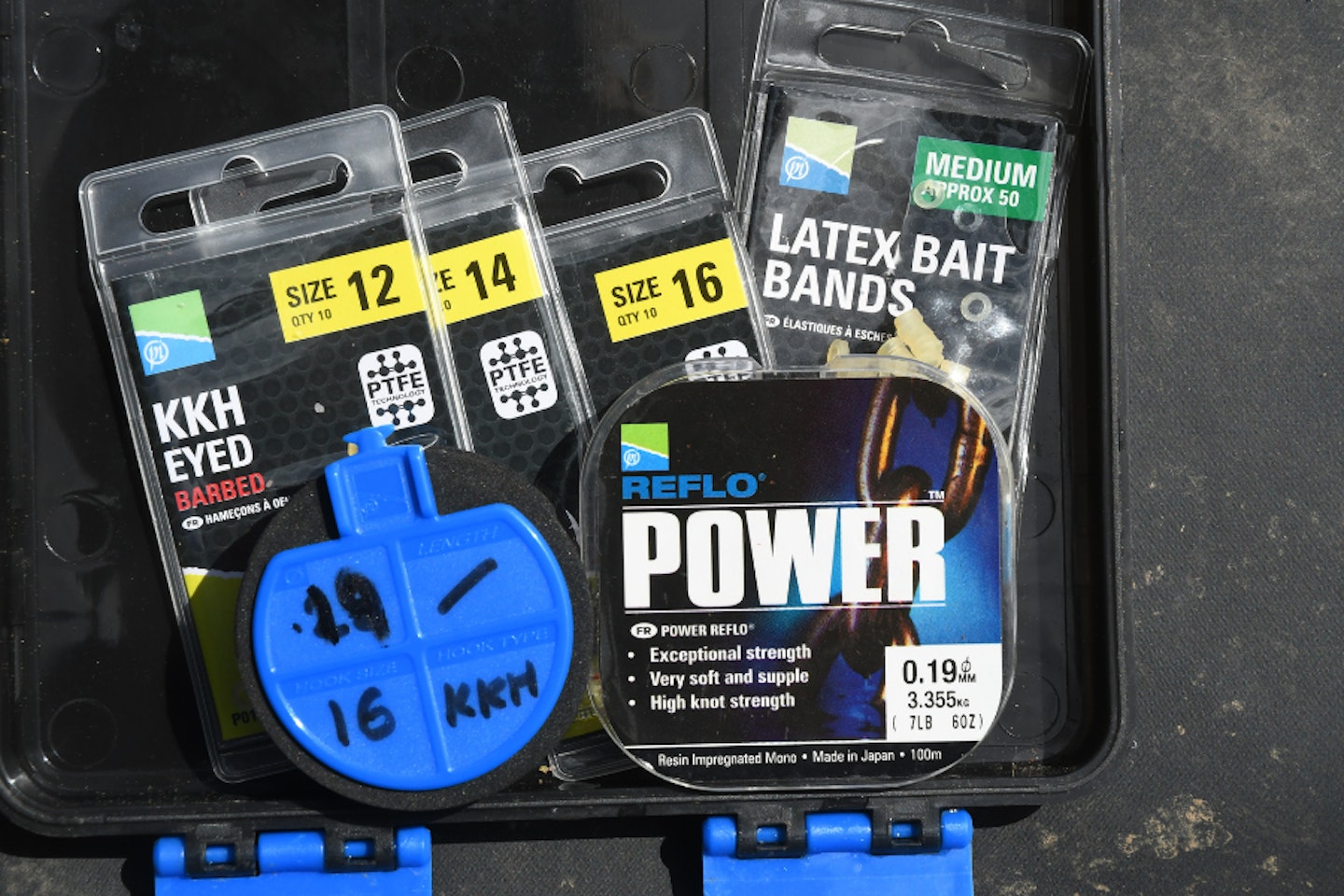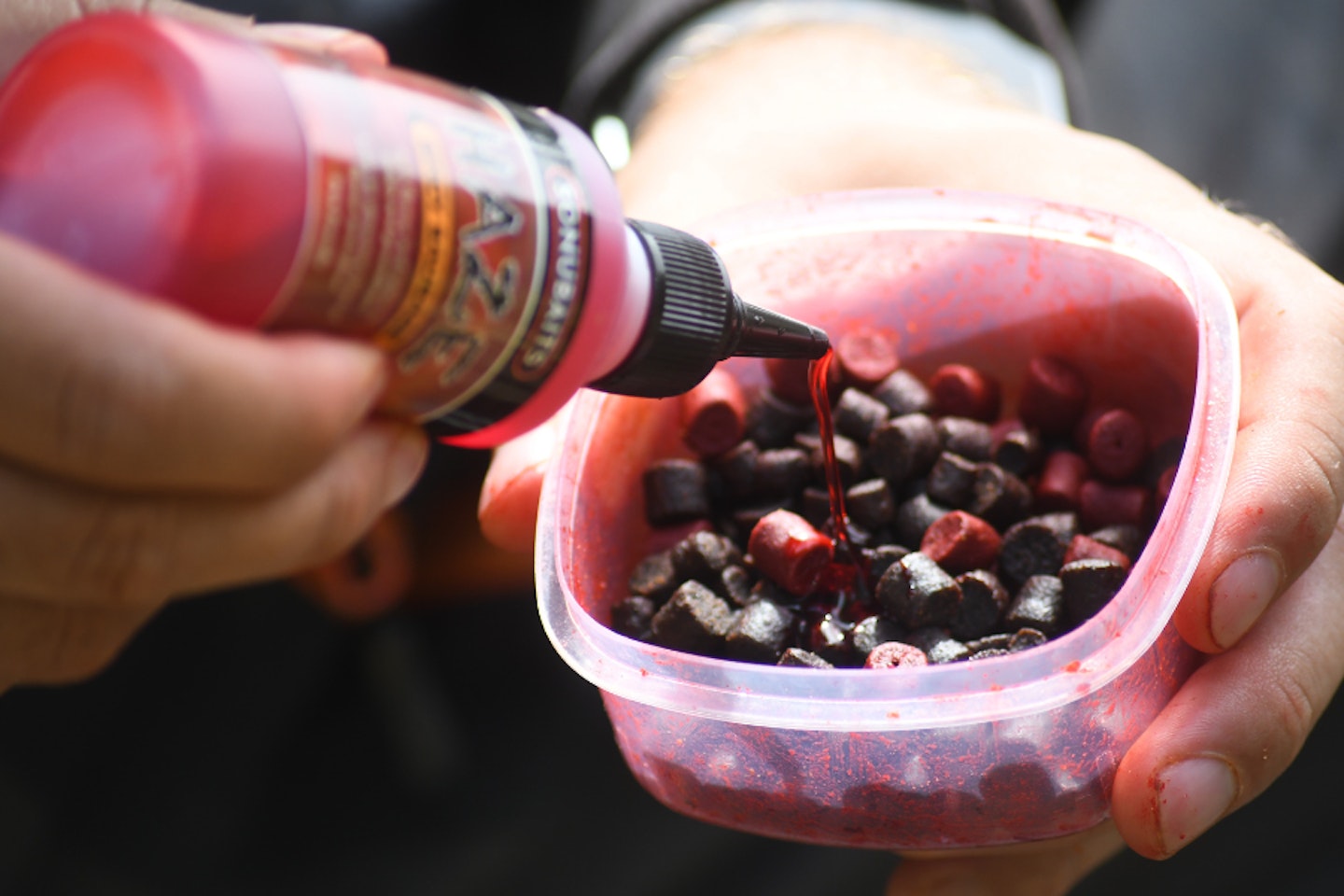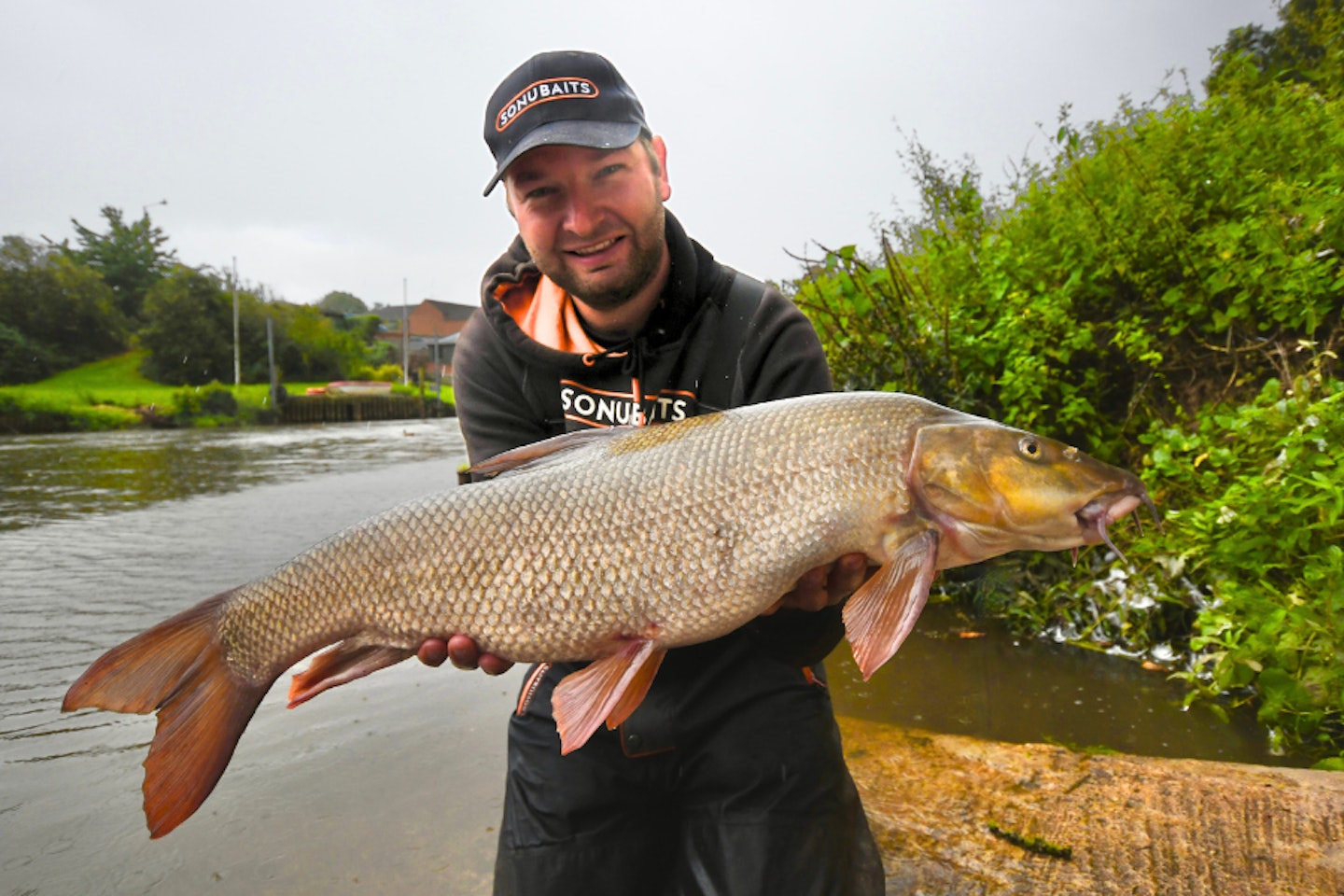So how do you make the most of a day on the riverbank? According to Jake Fowles, it’s all about flexibility, keeping things simple, and using a feeder approach that appeals to just about everything that swims.
Attraction, not overkill
"I work on the assumption that there are no fish directly in front of me at the start of a session, and so I use a pungent mix that will draw them in. If I am on a few fish already, they’ll home in on the feed pretty much right away."
“I use a pungent mix that gets fish moving from all directions. If there are fish already there, they’ll find it fast. If not, that smell will bring them in.”” he says.
The mix is simple but effective, consisting of a tin of hemp, a few good handfuls of halibut pellets, and half a bag of Sonubaits Meaty Salmon groundbait. The hemp juices help bind it just enough to load the feeder without turning it into a stodgy lump.
“It’s better to build things up slowly,” he says. “You can always put more in, but you can’t take it out.”
HEAD TO ONE OF THESE STRETCHES OF RIVER FOR AN EXCELLENT DAY'S FISHING.

A universal feeder rig
The rig is about as uncomplicated as it gets, a plastic open-end feeder with a 2ft 6inch hooklength, this may be shortened depending on what’s happening in the peg.
“I want to concentrate the bait in one spot and make sure it all gets to the deck,” says Jake.
“Plastic feeders hold onto the bait longer than cages, which helps create a tight carpet of attraction.”
That setup gives him options. If fish are sitting off the bait, he can switch to a longer hooklength. If he’s getting indications but no proper bites, shortening it can bring the hookbait closer to the action. It’s this kind of nimbleness that’s essential in early sessions when nothing’s nailed on.
THE BEST SEATBOXES WILL GIVE YOU A STABLE PLATFORM TO FISH FROM.

Use gear that won’t back down
“I always gear up with the biggest fish in mind, and strong tackle doesn’t seem to put off bream, chub or quality roach.”” Jake explains.
He uses 8lb Preston Innovations Sinking Feeder Mono down to a 0.19mm hooklength and a size 12 or 14 KKH barbed hook. For most flows, a 30g feeder is spot-on, but he’s quick to step up to 45g if the river’s pushing through.
His rod of choice is a 12ft with a bit of backbone but not too much brute force. That balance helps cushion smaller fish while still giving him control if something bigger turns up.
NEED A NEW FEEDER ROD? HERE ARE SOME EXCELLENT OPTIONS TO CHOOSE FROM.

A hookbait that strikes a balance
The feeder mix’s variety of smells and textures pulls everything in, from tiny roach to proper barbel. But for the hookbait, Jake wants something that avoids the smaller species without putting off the better stamp fish.
“A 6mm hard pellet is perfect,” he states.
“Bleak can’t mess with it, but a 1lb skimmer can still suck it in no problem.”
He rotates between a standard halibut pellet and a red version, both given a boost with a soak in Sonubaits Haze. It’s enough to make his hookbait stand out, but not so obvious that it spooks the fish.
DON'T BE WITHOUT THESE BAITS IF YOU ARE HEADING TO THE RIVER!

Build a routine
Feeding patterns depend entirely on what the fish tell him. At the start, Jake casts every five minutes. If he gets indications, he keeps going. If it’s quiet, he eases off to one chuck every 15 minutes to avoid overfeeding.
“It’s all about reading the peg,” he says.
“If fish arrive and there’s too much bait already down, they’ll either take ages to find the hookbait or ignore it completely.”
By holding back, watching the tip, and adjusting as he goes, Jake ensures that when the fish arrive, they find exactly what they’re looking for and he’s ready for them.
WANT TO FISH THE RIVER BUT AREN'T SURE HOW? OUR BEGINNERS GUIDE HAS ALL THE INFORMATION YOU NEED.

